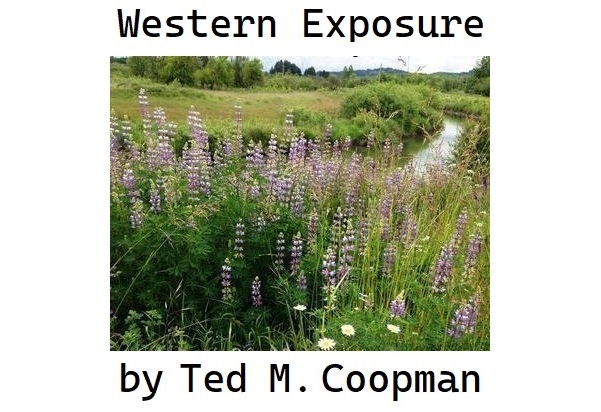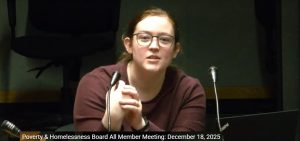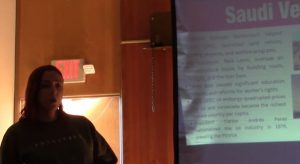The idea of ‘the’ homeless versus the reality of homelessness
6 min read
Instead of selectively referring to homeless people as a mass, maybe we should grant them the dignity of their diversity and judge individuals as individuals and not avatars of their group. —Credit to Yair Rosenberg for language and inspiration.
by Ted M. Coopman
A central tenet of social science is that there is more differentiation within groups than between groups. For example, there is more in common overall between housed and unhoused, than between people who happen to share the same shelter status. While this may be a hard concept to accept on its face, given some thought, it is obvious. People are people. There is more of ourselves in that person pushing a shopping cart full of possessions that we might think.
Talking about “the homeless” is about as useful as talking about “the housed.” There is a lot of talk about how homelessness is a housing problem, but homelessness is not a single source status, it is the result of multiple social and economic policy failures whose end result is becoming unsheltered. There is no single solution to homelessness because there are no unitary homeless.
As someone who lives in a neighborhood where homelessness presents itself every day, who as a neighborhood leader helps residents and businesses deal with the serious impacts of people living on streets and in our parks, and someone who interacts with a wide variety of unsheltered folks and those in various shelter programs, I find that the rhetoric used by many advocates and antagonists ranges from offensive to self-serving.
Unsheltered people are described as an undifferentiated mass, an identity, a social group, as sub-groups based on a wide variety of characteristics, and occasionally as individuals depending on the rhetorical goals of the speaker. Those goals are often to silence or demean opponents, to justify largely ideological stances, to perform an identity, or defend unrealistic policy demands than in accurately describing humans or, for that matter, working to address our crisis constructively and realistically.
Hell is other (homeless) people
We have a Community Supported Shelters Safe Spot in our neighborhood, and I talked with some of its first residents. I was stunned by their take on homelessness and unhoused people. They were not fans. Let’s just say that if one of my neighbors talked about the unhoused that way in a public meeting, people would gasp.
During years of daily trash patrols in Monroe Park I talked with a lot of unhoused folks. Number one complaint? Homeless people. Or more accurately, certain homeless people. Mostly it was about certain people destroying things, being violent, stealing, leaving a mess, or generally acting like assholes.
The unhoused I talked with hate it (and them) because they are sick of getting blamed and stigmatized for other people’s actions. They are sick of being just another homeless person who is, by default, a mentally ill, drug-addicted, thieving jerk. To add insult to injury, the people most likely to get victimized by this homeless element are other homeless. We can hide in our homes. They can’t. Sympathizing housed people talk compassion and understanding, homeless folks talk about kicking someone’s ass for trashing a bathroom they need to use. To wit:
The tragedy of the Monroe Park bathrooms
For years the flush toilets at Monroe Park were only open for events due to criminal activity. Starting in 2016 neighbors advocated to get them reopened to deal with public defecation, to service the playground, and as a resource for the unhoused. Through advocacy, they were first reopened during the summer and later year-around. This past year, the bathrooms were completely remodeled using Park Bond money.
Since then, they have been severely vandalized. Some homeless people figured out how to defeat the locks and use them as party shacks after hours. Clothing clogs the toilets, syringes and trash litter the floor, and human waste is smeared on the walls. Hazmat crews must be called in. This happens multiple times every week.
Parks is getting newer and better locks and installing outdoor cameras but plans to close the toilets for a couple weeks to see if they can “extinguish” the behaviors. Under current policy, if EPD arrested those responsible they would be processed and out on the street before the bathrooms were back in service. Who pays? We do—thousands of dollars every week wasted on top of the money used to refurbish the bathrooms; the homeless who need access to toilets and running water; and the families who take their kids to the playground.
Setting and enforcing boundaries and creating consequences for anti-social and objectively criminal behaviors is a baseline for regaining control of our public spaces, protecting the vulnerable unhoused, better preparing the unhoused to reintegrate into society and moving them into the structured shelter system.
The current harm mitigation strategy, facilitating people to live on the street in unsafe and unsanitary conditions, has created a situation where boundaries and responsibility for one’s actions are considered too much to ask. This infantilization is not compassionate, it is demeaning and denies the dignity of autonomy.
While there are certainly people who are so damaged by addiction and mental illness that they are incapable of taking any responsibility, a vast majority of those without shelter can and do – we simply rarely see them. Enabling a small but highly visible subset of unhoused people to essentially run amok has extremely high costs.
Criminal vagrancy
The tendency to equalize all those without formal shelter as “the homeless,” infantilize them, and anoint them with victimhood is damaging to the very people we are supposedly trying to help. At the most basic level, the primary victims of these criminal, violent, and destructive elements are other homeless who are robbed, beaten, raped, and traumatized so, beyond the human suffering, they become much more challenging and resource-intensive to help.
Being outdoors is stigmatizing enough, but being lumped in with the destructive element makes it an order of magnitude harder to productively engage with the larger society. Moreover, the larger social impacts of theft, criminal trespass, destruction of open spaces and public property, denial of public space to the public, harassment, intimidation, fear, interference with commerce, breakdown of public order, and all the associated wasted resources in dealing with it poisons the ability of society to compassionately and effectively deal with the underlying economic and social issues that drive people into homelessness.
We are faced with unprecedented levels of public disorder that undermine a functional, economically viable, and healthy community. The level of disorder is, in my opinion, in large part a misalignment of rights and responsibilities and a lack of accountability. How can we address this misalignment?
Read more about how we can strike a “Grand Bargain” on homelessness in the next installment of Western Exposure.
Western Exposure is a semi-regular column that looks at issues and challenges from a West Eugene perspective – a perspective that is often ignored or trivialized by city leadership and influential groups and individuals largely based in south and east Eugene.
Western Exposure rejects the fauxgressive party line, performative politics, and “unicorn ranching” policy in favor of pragmatism focused on the daily experiences of residents and small businesses in Eugene—and West Eugene in particular.
Ted M. Coopman has been involved in neighborhood issues since 2016 as an elected board member, and now chair, of Jefferson Westside Neighbors and has 30+ years experience as an activist and community organizer. He earned a Ph.D. in Communication (University of Washington) and served on the faculty at San Jose State University from 2007 to 2020.
Ted’s research on social movements, activist use of technology, media law and policy, and online pedagogy has been published and presented internationally and he taught classes ranging from research methodology to global media systems. He and his spouse live in Jefferson Westside with an energetic coltriever and some very demanding and prolific fruit trees.




